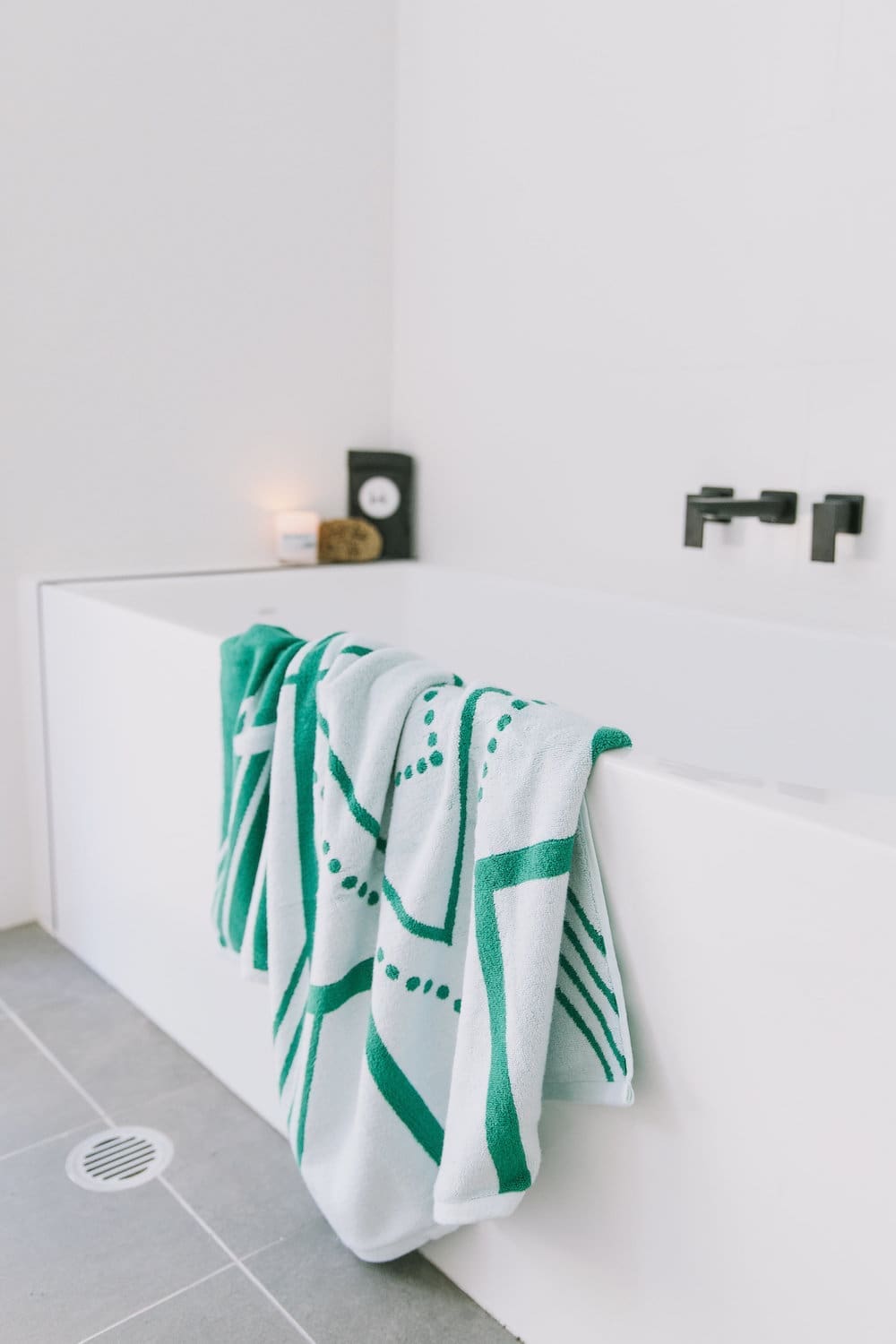A question I’ve been asked a lot lately is what size should I make tile grout joints? It’s come up so much that I’m writing an article about it!
Grout joints can vary from 1-2mm to up to 10mm and is the gap between tiles. The general rule of thumb is: the smaller the grout joints, the better! But it isn’t always possible to use a 1-2mm grout joint. Keep on reading as I share everything you need to know about tile grout joints.
Related article: Everything you need to know about picking the right grout
Related article: 15 stunning bathrooms that don’t use white tiles
What size should I make my tile grout joints?
Ideally, your grout joints would be 1-3mm. Often we see 1mm grout joints between wall tiles and 3mm grout joints between floor tiles.
Not only does it look better to have smaller joints, it also can minimise issues. For example, grout will discolour over time so keeping the joints smaller will minimse this issue.
The grout joint is also the weakest part of the tiled surface so larger joints means increased chance of cracking and the more obvious cracked grout will appear.

When would you use a larger tile joint?
In areas where there is more movement, such as in outdoor areas, you would need a larger grout joint of around 3-5mm.
It also depends on the tile you’re using. Rectified tiles with a square edge can have tight tile joints but if your tile has a cushion edge, you would most likely need a 3-5mm grout joint.
Quarry tiles can also need larger grout joints — up to a 10mm joint — because they are subject to thermal movement and will expand and contract in different climate.
Sometimes, you may also need a larger grout joint to get the right fall (i.e. floor slope to a floor waste for water to drain away) in smaller bathrooms.

What else should I know about grout?
Ideally you should use a high quality grout, as they have more polymer which makes them stronger, more flexible, and more resistant to water absorption, which is the main cause of grout discolouration.
Not everyone knows that there are dozens of grout colours to choose from. These range from white and ivory, to light and mid-grey, black and brown, and even bright colours too. When you select your tiles, I suggest asking to see a grout colour chart so you can select a grout colour to complement your tile.
Watch this quick video where I explain everything you need to know to select the right grout.
If you have more questions about tile grout joints, publish it in the comments section below and we’ll answer it asap!
More building and reno tips
This article was first published in October 2017 and continues to be updated with latest information and images.







Hi Gina
I have just had an en suite done with 100x100mm Luxe tiles (handmade look). The tiler without consulting me, made the tile spaces / grout lines between 5 and 7mm and I hate it! The grout is so glaringly obvious. Have I got any comeback on this?
Hi Ruby
Sorry to hear you’re unhappy with your new tiling job 🙁 Unfortunately once tiles are down, it’s usually impossible to remove them without breaking them. For decorative tiles of this size, I’d suggest 1mm tile joints but there’s no rulebook on the correct spacing so I’m not sure what options you have with your tiler. Generally, set out and spacing of tiles is agreed to (between either the client and tiler, or designer and tiler) before work starts…
Hi! This article is great!
We are renovating a home, and I found a geometric black/white cement tile that I LOVE, and was hoping to use as a backsplash in our kitchen (behind the stove) but is way out of our budget. Instead, I’m opting for a plain white rhombus-shaped tile using black grout to create a geometric pattern with the contrast. I was considering doing a thicker grout joint to make the pattern really pop. What’s the thickest you’d recommend?
Thanks!
Hi Christy, thank you, I’m glad you found it helpful 🙂 For this kind of splashback I would usually do a 1.5mm or 2mm joint but if want extra impact you could use a 3mm joint. I wouldn’t go any larger than that. Also, if I were you I would use a dark grey grout like ‘slate grey’ as it will create the look you want without being too harsh. Hope that helps!
Slate Grey–great idea. Thanks for your insight!